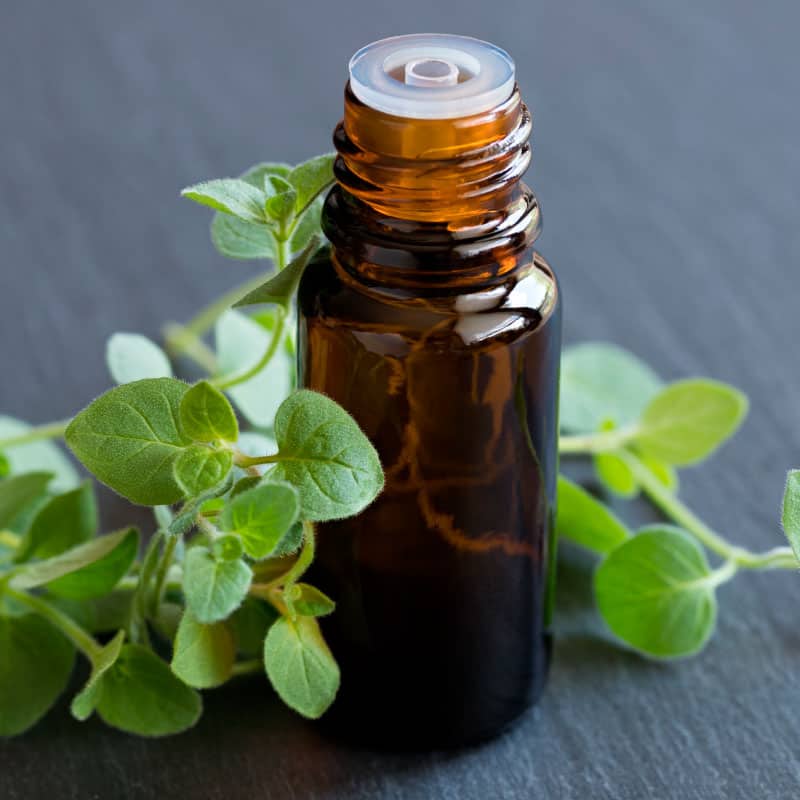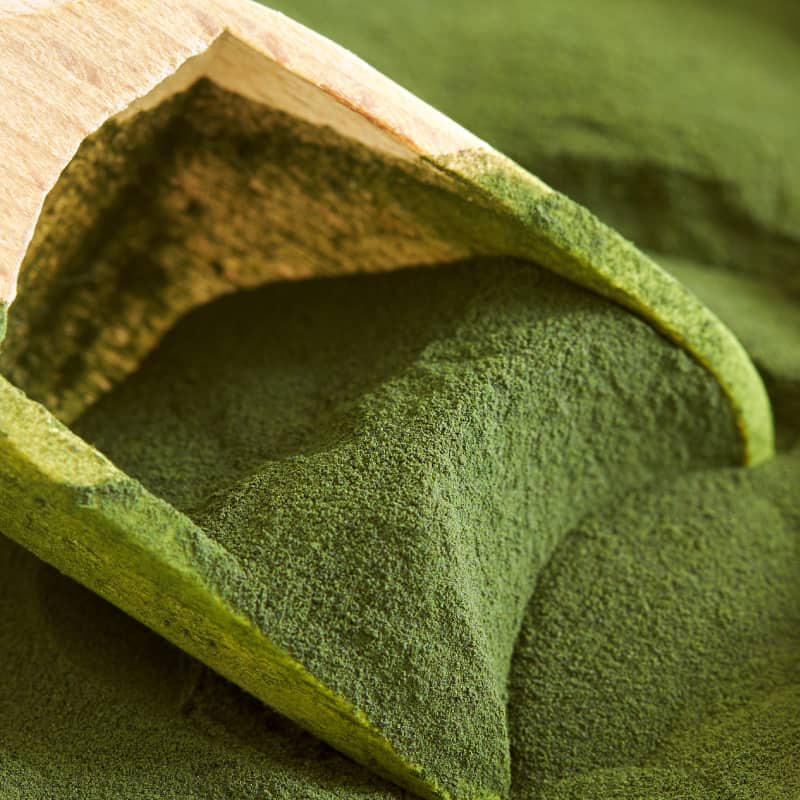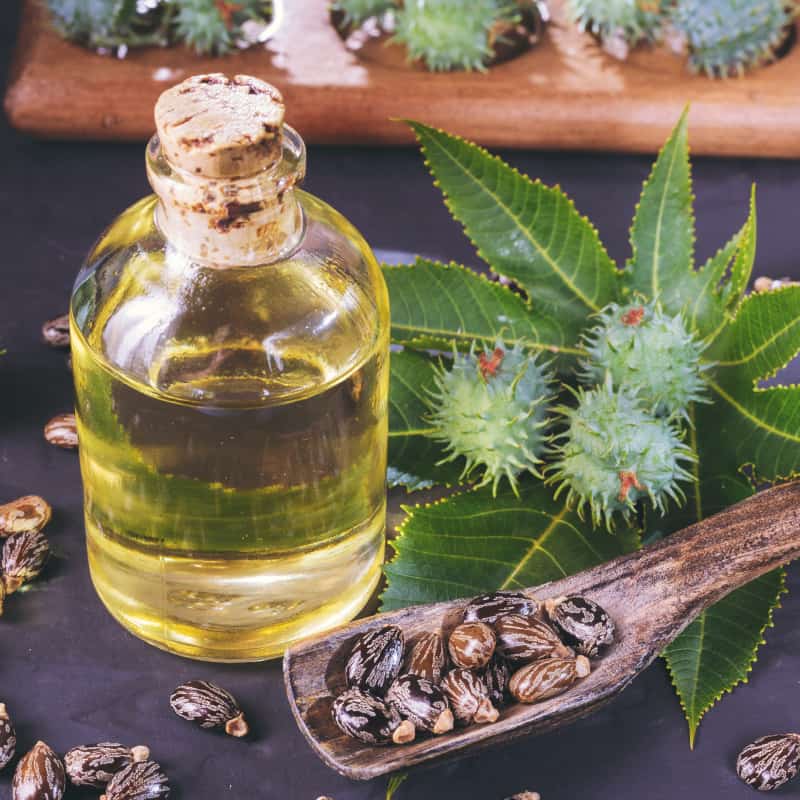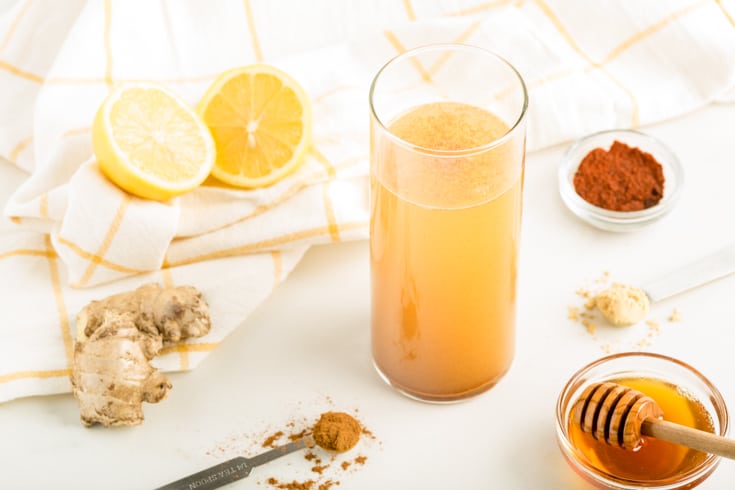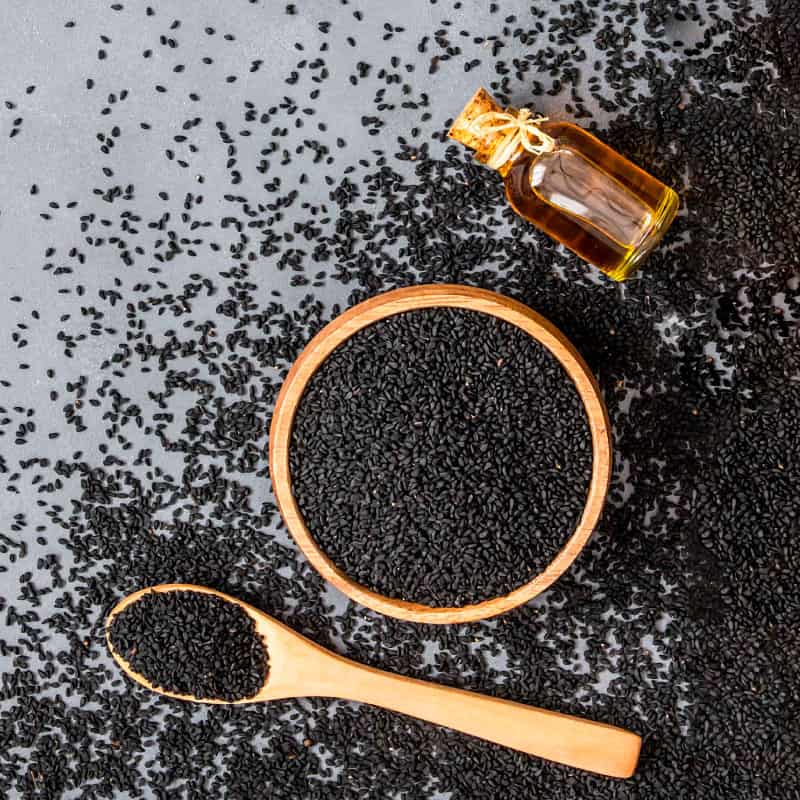This Dr. Axe content is medically reviewed or fact checked to ensure factually accurate information.
With strict editorial sourcing guidelines, we only link to academic research institutions, reputable media sites and, when research is available, medically peer-reviewed studies. Note that the numbers in parentheses (1, 2, etc.) are clickable links to these studies.
The information in our articles is NOT intended to replace a one-on-one relationship with a qualified health care professional and is not intended as medical advice.
This article is based on scientific evidence, written by experts and fact checked by our trained editorial staff. Note that the numbers in parentheses (1, 2, etc.) are clickable links to medically peer-reviewed studies.
Our team includes licensed nutritionists and dietitians, certified health education specialists, as well as certified strength and conditioning specialists, personal trainers and corrective exercise specialists. Our team aims to be not only thorough with its research, but also objective and unbiased.
The information in our articles is NOT intended to replace a one-on-one relationship with a qualified health care professional and is not intended as medical advice.
Osteopathic Manipulative Therapy Benefits & Uses for Pain, Insomnia + More
April 6, 2017

A growing body of research continues to show that osteopathic care has real benefits for a variety of patients of all ages and fitness levels. According to the American Osteopathic Association, “Osteopathic manipulative treatment, or OMT, is hands-on care. It involves using the hands to diagnose, treat, and prevent illness or injury. Using OMT, your osteopathic physician can move your muscles and joints using techniques including stretching, gentle pressure and resistance.” (1)
Osteopathic manipulative therapy (OMT) is also sometimes called osteopathic manual medicine (OMM). Although it takes lots of formal training, expertise and practice, manipulative therapy is essentially what some describe as “healing touch.” Those who turn to OMM most often are looking for natural pain relief or improvements in other symptoms which can include: chronic muscular pains, frequent headaches or migraines, loss of functionality, TMJ, carpal tunnel syndrome, or trouble sleeping and breathing normally.
What Is Osteopathic Manipulative Therapy?
Here are answers to some of the most common questions regarding osteopathic manipulative therapy (OMT):
What is manipulation therapy?
Manipulative therapy is a type of natural “manual medicine.” One definition of osteopathic manual medicine, according to the Des Moines University’s Iowa Academy of Osteopathy, is “a non-invasive, hands-on therapy used to diagnose, treat and even prevent illness or injury.” (2)
Two of the leading alternative health care systems practiced in the U.S. and elsewhere today are osteopathy and chiropractic care, which are closely related considering both depend on manual adjustments. It’s also for common for many physical therapists to practice certain osteopathic manipulations with their clients, such as active release technique or myofascial release.
Osteopathic physicians commonly receive training in OMM as an additional offering, providing patients with a range of treatment options and recommendations. Many doctors who perform manipulative therapy techniques are trained in other fields of medicine too, including in specialty areas such as chiropractic adjustments, massage therapy, acupressure and sometimes nutrition.
What is osteopathic treatment?
A primary goal of osteopathic medicine is aiming to treat “the whole person,” not just the obvious symptoms. In other words, rather than prescribing specific exercises or prescription drugs just to resolve one painful ailment or injury, osteopathic physicians try to identify the root causes of pains or impairments (such as muscular compensations or weaknesses), while also addressing how these causes affect the rest of the body.
Most osteopathic hands-on treatments address mechanical problems of the body, including those due to muscular and joint dysfunctions. Manipulations target fascia (connective tissue), major muscle groups, joints, tendons and ligaments. Many people develop pain or symptoms as a result of overused muscles, poor posture or poor form when exercising, scar tissue formation, tears, pulls, strains and inflammation (the root of many diseases).
By performing targeted manipulations, many patients are able to move or exercise more easily, experience less pain, breathe better, see improvements in sleep quality, and go about normal day-to-day activities with less interference from symptoms.
The Spine Health website states that common forms of manipulation used today in osteopathic care include: (3)
- Active release techniques (or ART), which includes soft tissue techniques that helps relieve tight muscles and nerve trigger points, greatly reducing joint stress or muscular pains. The primary goal of active release technique is to restore normal mobility and “glide” between muscular tissue and nerves. (4) Manipulations can help push joint fluid throughout the body and stimulate the lymphatic system, which helps lower inflammation.
- Myofascial release, sometimes performed by patients or athletes on their own using a foam roller, which breaks up adhesions in soft tissue
- Cranial-sacral, or manipulations on the head and skull
- Counterstrain manipulations that target tender points produced by inaccurate neuromuscular reflexes
- High velocity-low amplitude, which is a type of classic “thrust” technique
- Other forms of muscle-energy stimulation, including acupressure or massage therapy
- Ligamentous release
- Lymphatic pump, which stimulates the lymphatic system that carries caste away from tissue
- Visceral techniques, or pressure gently applied to the internal organs of the body, such as the liver, kidneys and intestines
- And other natural, soft tissue treatments like craniosacral therapy, Graston Technique, dry needling and NeuroKinetic therapy
Who benefits from osteomanipulative therapy?
The Journal of the American Osteopathic Association (JAOA) has published findings regarding the benefits of OMM for dozens of different conditions and injuries. Manipulative therapies are most commonly used to treat some of the following:
- Chronic knee, shoulder, low back or neck pains
- Asthma and other respiratory/breathing problems
- Sinus disorders and related conditions like pneumonia
- Carpal tunnel syndrome
- Headaches and migraines
- PMS or menstrual pains
- Problems with motor control or coordination due to injuries, impact or trauma (such as car accidents, falls or collisions)
- Instability, or problems with motor control and falling due to lack of balance
- Side effects due to medications or drug and alcohol addiction
- Digestive complaints, including constipation or acid reflux
- Hypertension and cardiovascular problems
- Kidney disease
- Compared to younger people, older adults and the elderly tend to seek care from doctors of osteopathy more often, due to higher incidences of aches, pains, injuries and conditions like arthritis or degenerative joint diseases.

Benefits of Osteopathic Manipulative Therapy
1. Helps Reduce Pain Naturally, Including Low Back or Neck Pain
Lower back pain is one of the most common complaints among adults, negatively impacting almost 80 percent of people at one point or another! Research shows that back pain is often a result of carrying extra body weight, osteoarthritis, overuse, accumulated damage to the spine and discs, or a sprain or a strain of the structures of the back such as the muscles, ligaments or joints. (5)
OMM can help treat back pain along with preventing it from worsening or returning by altering the position of certain vertebra along with mobilizing joints in the lumbar spine (lower back) though manipulations, which are also called adjustments. Some of the conditions that osteopathic manipulations may help treat which commonly cause back pain, neck pain or pains running down the legs include: (6)
- Sciatica (or sciatic nerve pain)
- Facet joint injuries
- Osteoarthritis
- Sacroiliac joint dysfunction
Spine Health states that chiropractic techniques and other osteopathic manipulations that are most often used for pain relief on the spine include:
- Soft tissue adjustments like counterstrain, massage and myofascial release
- Instrument adjustments using a spring-loaded instrument
- Lumbar rolling
- Motion palpation along the vertebra to identify joint dysfunction
- Release work to apply pressure to the vertebrae.
- Toggle drop to press down on the spine and improve mobility
2. Can Improve Sleep Quality
At least several studies have found support that osteopathic manipulations can help decrease insomnia and have positive effects on other sleep disorders due to stress or pain.
One review that included 13 studies — which tested the effects of spinal manipulative therapy, muscle relaxation techniques, cranial adjustments and mind-body medical therapies for sleep disorders (especially insomnia) — found evidence that osteopathic care offers patients benefits. However, because the majority of sleep disorders are “multifaceted,” the most significant improvements were seen in those who incorporated other lifestyle changes, too (like exercise, dietary changes, stress reduction, etc.). (7)
Some of the ways in which researchers believe that hands-on manipulations may help improve sleep include:
- Promoting muscle relaxation
- Reducing pain, tension or headaches that can interfere with sleep
- Normalizing transmission of impulses from the thalamus to the limbic system in the brain (which helps control the stress response and reduce feelings of anxiety)
3. Helps Break Up Scar Tissue, Lower Muscle Tension & Heal Injuries
Some osteopathic techniques, including Graston Technique or Active Release Technique, can target areas developing scar tissue that can lead to injuries or loss of functionality. These maneuvers work to break up fibrous adhesions, improve blood flow to damaged areas, move lymphatic fluid, and reduce pain and/or muscle tension.
If case you’ve never heard of these two techniques, ART is similar to myofascial release, while Graston is performed using a handheld instrument that helps apply deep pressure to the patient’s injured areas in a rhythmic way. This can improve flexibility, range of motion and offer protection against future injuries— such as to the back, lower legs and shoulders. (8) Both types of treatments are offered by certain providers including athletic trainers, chiropractors, hand therapists, occupational and physical therapists.
4. Can Help Normalize Breathing & Respiratory Functions
A 2014 study published in the Journal of Visualized Experiments found that osteopathic manipulative treatment could be used as an effective adjunctive tool for patients with respiratory conditions, inflammation of the lungs or airways, or illnesses including pneumonia. (9)
Certain studies have found that compared to patients not receiving osteopathic manipulative therapy, those who do meet with a osteopathic physician tend to experience added benefits including: a cost-effective alternative to other expensive or risky treatments, reduced length of hospital stay when suffering from pneumonia, reduced duration of intravenous antibiotics, and lowered incidence of respiratory failure or death. (10)
Specific techniques that are used to address respiratory problems through means like lymph drainage and rib cage mobility include: Rib Raising, Thoracic Pumping, Doming of the Thoracic Diaphragm, and Muscle Energy work. Some of the ways that these osteopathic maneuvers can help manage these illnesses include increasing lymphatic flow, improving overall respiratory function by lowering inflammation, and boosting immunological defenses by targeting anatomical structures involved in the respiratory and immune systems.
5. May Complement or Replace Certain Medications
Although benefits achieved from OMM vary from person to person, some find that osteopathic care can replace or at least compliment drugs and/or surgery. Some medications that osteopathic manipulations or treatments might help make more effective, or in some cases lower the need for, include:
- Sleep aids, such as pharmacologics like benzodiazepine and benzodiazepine agonists used to treat insomnia
- Pain killers, whether kinds that are over-the-counter or prescription
- Antacids for digestive complaints like heartburn or acid reflux
- Corticosteroids for swollen, inflamed injuries
- Statins to help treat heart conditions
- Or antibiotics, fluid replacement, and ventilation for conditions that cause trouble breathing
History of Manipulative Medicine (OMM)
Various forms of manipulative therapy — including massage, acupressure, spinal adjustments and many others — have been practiced all over the world for over 2,000 years! Certain historical references point to the fact that manipulative therapies aimed at correcting musculoskeletal and spinal abnormalities were used in Europe as far back as the year 400 B.C.
According to a publication in the Journal of Manual and Manipulative Therapy, Hippocrates himself, referred to by many as “the father of medicine,” described his own spinal manipulative techniques for treating conditions, including scoliosis, naturally. (11)
Hippocrates believed that the use of gravity — along with basic tools and equipment like straps, wheels, ladders and axles — could be used to impart enough pressure on the skeletal system to help realign body parts contributing to dysfunction. Hippocrates and other physicians who followed in his footsteps also recommended practicing exercises after adjustment, along with building strength in weak areas, standing and walking more.
Even today many modern massage techniques (such as Swedish, deep tissue or Thai massage) and spinal manipulation maneuvers draw on knowledge and traditions dating back centuries. Manipulative healers from countries such as Greece, Indonesia, Hawaii, Japan, China, Thailand, India and others have contributed a large body of research and expertise to the entire field of osteopathic medicine.
According to the American Association of Colleges of Osteopathic Medicine, “Osteopathic medicine is a distinctive form of medical care founded on the philosophy that all body systems are interrelated and dependent upon one another for good health.” This philosophy was developed and spread throughout the world in the late 1800s by a doctor named Andrew Taylor Still. Many believe he formed the modern day concept of “wellness” and was one of the first physicians to explain why prevention was so key in health, plus why it was so important to treat a patient’s whole body, rather than just short-term symptoms. (12)
What is a Doctor of Osteopathy? Plus, How to Find One
Doctors of Osteopathic Medicine (or osteopathic physicians as they are sometimes called) are commonly referred to as “DOs” for short. DOs receive special training in the musculoskeletal system, the body’s interconnected system of nerves, muscles and bones. (13) They are fully licensed physicians who usually practice not only hands-on manipulations, but often other types of treatment approaches and medicines, too.
DOs complete four years of osteopathic medical school and then are required to complete internships, residencies and fellowships, which prepare them to become licensed and board-certified. Currently, there are more than 100,000 DOs in the U.S. alone. Exact requirements in order to practice vary by state, but usually DO licensure requires successful completion of a medical licensing exam administered by the state licensing board or acceptance of a certificate issued by the National Board of Osteopathic Medical Examiners.
DOs are somewhat different from primary care physicians in that they emphasize “a whole-person approach” to treatment and care, along with focusing on prevention instead of just symptom relief. The first time you meet with a new DO, it’s common to spend a good deal of time talking over your medical history, symptoms, lifestyle, level of stress, possibly your diet and so on in order to identify any factors that might be contributing to your impairments. Communication and understanding the patient as an individual are very important in osteopathic care setting, giving the physician all the information they need to help create a holistic, healing plan.
For help finding a DO in your area, you can search by location on the Doctors That Do website, put together by the American Osteopathic Association. For information on osteopathic physicians that are active AOA members in practice, you can also search by name, location or specialty here.
Precautions Regarding Osteopathic Treatments
In many countries, osteopathy and chiropractic care are two of the only types of complementary and alternative medicines (CAMs) that are regulated under state or federal law. When meeting with a physician for the first time, check that they have renewed their registration each year, discuss your insurance and financial options, and disclose any information that might be relevant about your lifestyle, exercise and sleep habits, and past injuries.
Following treatment, it’s not uncommon to experience mild side effects that can include: soreness or pain in the treated area, headaches, stiffness, swelling or fatigue. These should improve within several days and as time goes on, but talk to your physician if you notice any symptoms getting worse.
Finally, talk to your doctor if you have any of the following health problems, which might mean you’re not a good candidate for osteopathic manipulations until you heal: osteoporosis, fractures, inflamed arthritis, an active infection or virus, blood clotting disorders, cancer or multiple sclerosis (MS). (14)
Final Thoughts on Osteopathic Manipulative Therapy (OMT or OMM)
- Osteopathic manipulative therapy is a type of natural “manual medicine” using hands-on maneuvers that move, stretch, drain, realign and massage problematic areas of the body.
- OMM techniques include chiropractic adjustments, active release technique, myofascial release, visceral techniques and lymphatic pumping.
- Benefits of OMM include increased range of motion or flexibility, less pain, and improved breathing, sleep and energy.
Read Next: 7 Benefits of Ayurvedic Medicine
[webinarCta web=”hlg”]



